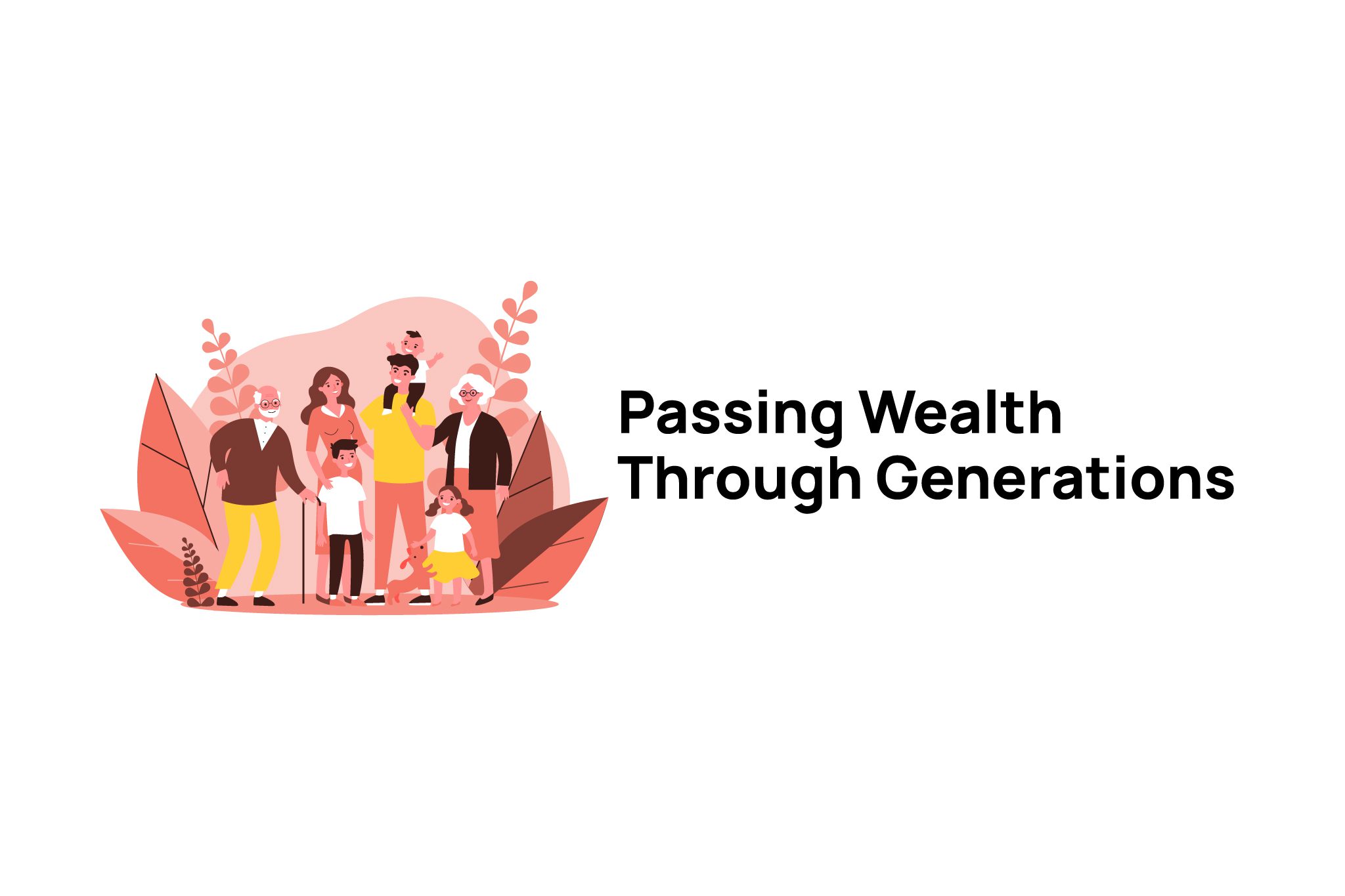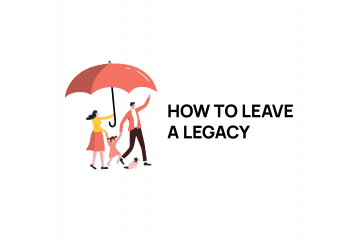As the baby boomer generation ages, we are entering into a time of unprecedented wealth transfer. Estimates right now suggest that in the next few years, trillions of dollars will move from baby boomer parents to their Generation X and Millennial children. This statement sounds like a windfall. For many people, the idea of inheriting money from previous generations represents a potentially life-changing financial event. The downside to this is that the flow of cash from one generation to the next runs through a filter. That filter is taxation, and if you don’t plan your wealth transfer properly, it is possible to lose significant amounts of money to income taxes and probate fees. One way to minimize the amount of tax that you pay when passing wealth through generations is to utilize life insurance. Life insurance has two key advantages when it is being used as a tool to pass wealth to younger generations. The first advantage is that the death benefit bypasses your estate and is paid directly to named beneficiaries. This means that the payout from life insurance will never be subject to probate fees. The second advantage is that the death benefit payment from a life insurance policy is tax-free money to the beneficiary. There are no income tax dollars owed on money received from the death benefit of a life insurance policy. With these two advantages in mind, let’s take a look at the idea of cascading wealth and how you can use life insurance to pass wealth down to future generations efficiently.
In This Article:
- Cascading Insurance
- How does the Cascading Insurance strategy work?
- One More Tax Advantage
- Benefits to Each Generation
- Conclusion

Cascading Insurance
Sometimes known as ‘Waterfall Insurance,’ the idea behind Cascading Insurance as a strategy is that it is an ultra-efficient way for someone to pass wealth through to future generations while maintaining control of their current assets. This strategy allows someone to use life insurance to create a sizeable legacy for future generations while also limiting two other items:
- You limit the risk of your will being contested. Since one of the core concepts of life insurance is that it involves estate bypass (as long as you have a named beneficiary), the money from death benefit payments never becomes part of your estate. As a result, its distribution is not controlled by your will and won’t be affected by anyone contesting that document.
- You maintain privacy over your financial affairs. Many people are unaware of this, but once it has been probated, your will can be searched out and seen by anyone. All it takes is a lawyer with a code to search a website after your will has been probated and your will can be viewed by anyone. Again, the estate bypass aspect of life insurance plays a key role here. Since it never enters the estate and, as a result, is never probated, any money that passes to your beneficiaries via life insurance is never public record.
Get a free quote
How does the Cascading Insurance strategy work?
This is typically a multigenerational plan involving grandparents (we’ll call this G1), parents (G2) and grandchildren (G3). The grandparents (G1) start the process by purchasing a permanent life insurance policy for the lives of their children (G2) or grandchildren (G3). G1 arranges for payment of the premiums on the policy using assets that they intend to leave to G2 or G3 anyway. The grandparents have created a legacy by repurposing money that they were going to leave to their heirs anyway. Since money is being moved into a life insurance policy, it gains preferred tax treatment on any growth that happens. This adds to the idea that the legacy being created is more tax-effective and will result in more wealth being transferred to the beneficiaries than would have happened if the assets ran through the estate of G1 at their death.
One More Tax Advantage
When you set up this type of plan as a grandparent, you would own the policy on the G2 or G3 individual. This, in all likelihood, will be a permanent, participating life insurance policy where there will be cash value inside the plan, and it will grow in value every year (dividends aren’t guaranteed, but there are guaranteed increases in the base policy cash value every year). The G1 owners will also appoint a contingent owner for the plan who meets the Income Tax Act’s definition of being their ‘child .’ This doesn’t have to be the same person as the life insured, so if the policy was taken out on a G3 grandchild, the owner could become the G2 parent of that G3 family member. Here’s another spot where life insurance shines. When the G1 policy owner dies, and the ownership of the policy is transferred to their ‘child,’ this does not trigger a taxable event. Why did I put ‘child’ in quotes? The Income Tax Act defines a ‘child’ in this case as anyone who is one of the following:
- the policyowner’s child,
- the policyowner’s grandchild,
- a person who, at any time before the person attained the age of 19 years, was wholly dependent on the policyowner for support and of whom the policyowner had, at that time, in law or in fact, the custody and control,
- a person of whom the policyowner is the legal parent,
- a child of the policyowner’s spouse or common-law partner, and
- a spouse or common-law partner of a child of the policyowner, even after the child of the policyowner predeceases the son-in-law/daughter-in-law.
Typically, if you try and pass an asset down from one generation to the next, you would trigger a taxable event. Since there is a provision for the rollover of life insurance, the entire policy, including accumulated cash value and transfers to the new owner (as long as they meet the definition of being a child of the owner), is tax-deferred.

Benefits to Each Generation
The original owner (G1) receives a few key benefits from the use of the cascading life insurance concept. The first of these benefits is that, as long as they are alive, they maintain control of the insurance policy and the cash value it contains. If they need to access the cash value during their lifetime, they are still able to do this. Secondarily, the owners are given the opportunity to move some of their assets from taxable, non-registered investments into the tax-advantaged environment of the life insurance policy. There is no annual taxation on the growth of cash value in a life insurance policy. Finally, the G1 generation gets the satisfaction of being able to pass along money to future generations in the most tax-effective way possible. By funding a life insurance policy for their children, they are, in effect, providing protection for the financial future of both their children and grandchildren.
Subsequent generations (G2 and G3) receive the immediate benefit of life insurance protection for their family. Once the ownership of the policy transfers, they also gain access to the cash value inside the policy. This can allow for that money to be leveraged in a few different ways:
- A policy loan – this is money borrowed directly from the insurer that is secured against the policy’s cash value. This could result in some taxable income depending on the adjusted cost basis of the policy.
- Collateral loan – this is when the cash value of the policy is used to secure a line of credit from a bank or other financial institution. Since no cash is actually removed from the policy, there is no taxable income that is triggered.
- Full or partial policy surrender – this is when all or a portion of the coverage is given up in exchange for the cash value associated with it. Again, this could trigger taxable income depending on the adjusted cost basis of the policy.
A significant benefit to the concept of a grandparent passing a policy on to a grandchild is that any tax consequences are in the grandchild’s name; typically, this would be at a marginal tax rate than the grandparent would face.

Conclusion: Passing Wealth Through Generations
The concept of cascading insurance is beautiful because, at its core, it is a simple solution to a potentially complex problem. Estate planning to minimize taxation can involve the establishment of complicated trusts or corporate structures. It is not necessary to follow this strategy because personally owned life insurance policies bypass the complicated steps. With the rules in the income tax related to the transfer of ownership of policies and the fact that if the life insured passes away, they simply pay the death benefit to the beneficiary, we achieve clean and simple wealth transfer between generations. Talk to your insurance advisor about this strategy. It is not a short-term plan; you need to be focussed on the long-term transfer of assets into the insurance plan for this to work best, but families who commit to the idea will see significant impacts on future generations.




